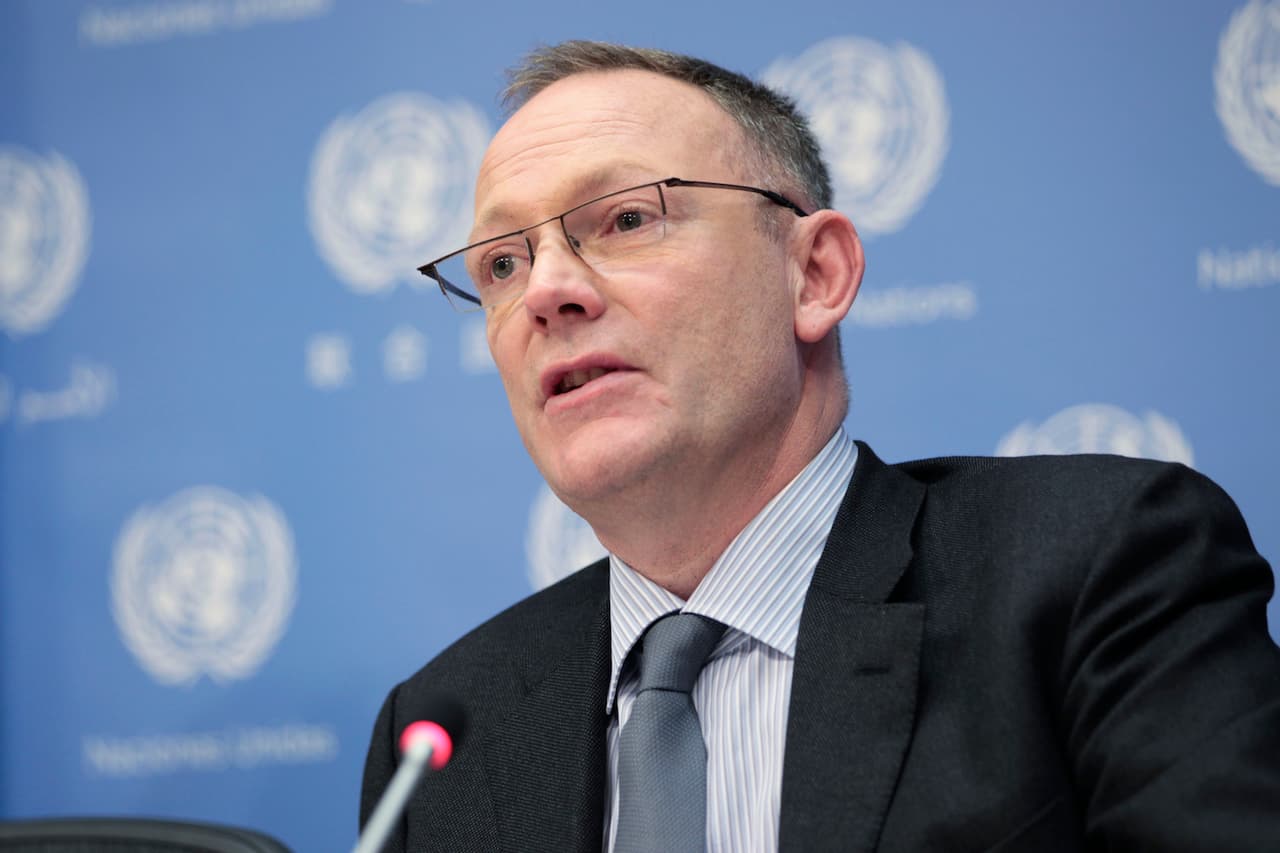
Countries must investigate civilian drone death claims, says UN investigator Ben Emmerson
UN investigator Ben Emmerson said investigating civilian casualties is a legal obligation (United Nations).
Yesterday UN investigator Ben Emmerson presented his latest report on drone strikes to the UN Human Rights Council (HRC) in Geneva.
Emmerson, a British lawyer and UN special rapporteur on counter-terrorism and human rights, said countries are under a ‘present and continual legal obligation’ to investigate claims of civilian deaths in drone strikes, and to publicly disclose the results of their investigations.
He said the escalation in reported drone strikes and civilian casualties in Yemen is ‘a cause for concern’. And he highlighted ‘a three-fold increase’ in civilian deaths from drone attacks in Afghanistan last year.
– Ben Emmerson
Emmerson has been investigating the use of armed drones for 14 months. His report examined 37 drone strikes where there are reports of civilian casualties. The 37 is a sample of the strikes the US, UK and Israel have launched in Pakistan, Afghanistan, Yemen, Somalia and Gaza.
Related story: UN report identifies 30 drone strikes that require ‘public explanation’
The report reduces the the 37 strikes to a list of 30 in which either a single credible source or multiple sources report civilians casualties. Emmerson told the HRC these strikes require a ‘legal duty on the relevant states to provide a public explanation of the circumstances and a justification for the use of deadly force’.
He stressed: ‘this is not a political demand for an explanation’. He told delegates to the HRC: ‘In my judgement the states responsible for these strikes are under a present and continual legal obligation to disclose the results of their own fact finding inquiries or explain why it is that no such inquiries have so far taken place.’
The investigation did not conduct field research, but instead surveyed available evidence. Sixteen of the 30 strikes included in Emmerson’s report took place in Pakistan, Yemen and Somalia. The Bureau has identified civilian casualties in each of them. One of the strikes, on June 23 2009, was among those identified by the Bureau when it investigated strikes in which civilians had been killed whilst attending funerals or going to help those injured in strikes.
Two other strikes in the Emmerson report, those on March 17 and June 15 2011, were included in a Bureau investigation that questioned claims made by John Brennan, then President Obama’s chief counter-terrorism adviser, that drones had gone nearly 11 months without killing civilians in Pakistan.
Related story: US must release data on civilian drone casualties, says UN report
Emmerson also referred to an interactive website produced by Forensic Architecture, based at Goldsmith’s College in London, and Situ Research in New York.
The sites of each of the 30 drone strikes included in the report are marked on an interactive map in the online platform. It combines video footage and pictures of the aftermath of the strike with witness testimony, satellite photographs and computer models to give more detailed analysis of the consequences of four of the strikes on the survivors and the surrounding area.
Emmerson intends to keep working with countries on legal issues around drone strikes and said he will update the website with fresh information.
Patterns of civilian casualties
Emmerson brought the HRC up to date on ‘the patterns of civilian casualties arising in the use of armed drones’. He noted that civilian casualties in Pakistan fell to zero in 2013 – the first time in nine years no confirmed civilian casualties were recorded.
Reports of civilian casualties have been falling since 2010 as has the civilian casualty rate – the average number of civilians reported dead in each drone strike on average.
Related story: UN launches major investigation into civilian drone deaths
There has not been a drone strike in Pakistan so far this year. Emmerson told the HRC: ‘The diplomatic and political efforts of Pakistan to bring these strikes to a halt so as to enable peace talks with the Tehrik e Taliban take place appear to have born fruit.’
Last month Rahimullah Yusufzai, a journalist and member of the Pakistani government’s negotiating team for the peace talks, told the Bureau that Islamabad had requested the hiatus.
However, ‘the picture in Afghanistan and Yemen is much less reassuring’, Emmerson said. Drones accounted for almost 40% of civilian casualties from air strikes in Afghanistan last year.
In Yemen, ‘a sharp escalation in the number of reported civilian casualties’ towards the end of 2013 is ‘a source of concern’, he added. On December 12 2013 a US military drone strike killed at least eight civilians traveling to a wedding celebration. The bride was among the injured.
International consensus
Emmerson told the HRC there is a ‘need to promote an international consensus on the core legal principles applicable to the use of armed drones in counter-terrorism operations.’
‘It’s important that a consensus now be reached, not just regionally but internationally.’ There are eight ‘key legal questions’ in his report ‘which need to be urgently debated and if possible resolved.’ To that end he recommended a panel of experts should be convened to debate these points at the September meeting of the UN HRC – something Pakistan ‘strongly endorses’, its ambassador told the meeting.
He recommended that international panel should discuss the legal issues identified in his report at the September HRC meeting.
Follow Jack Serle on Twitter. Sign up for the drones newsletter and subscribe to the podcast.


